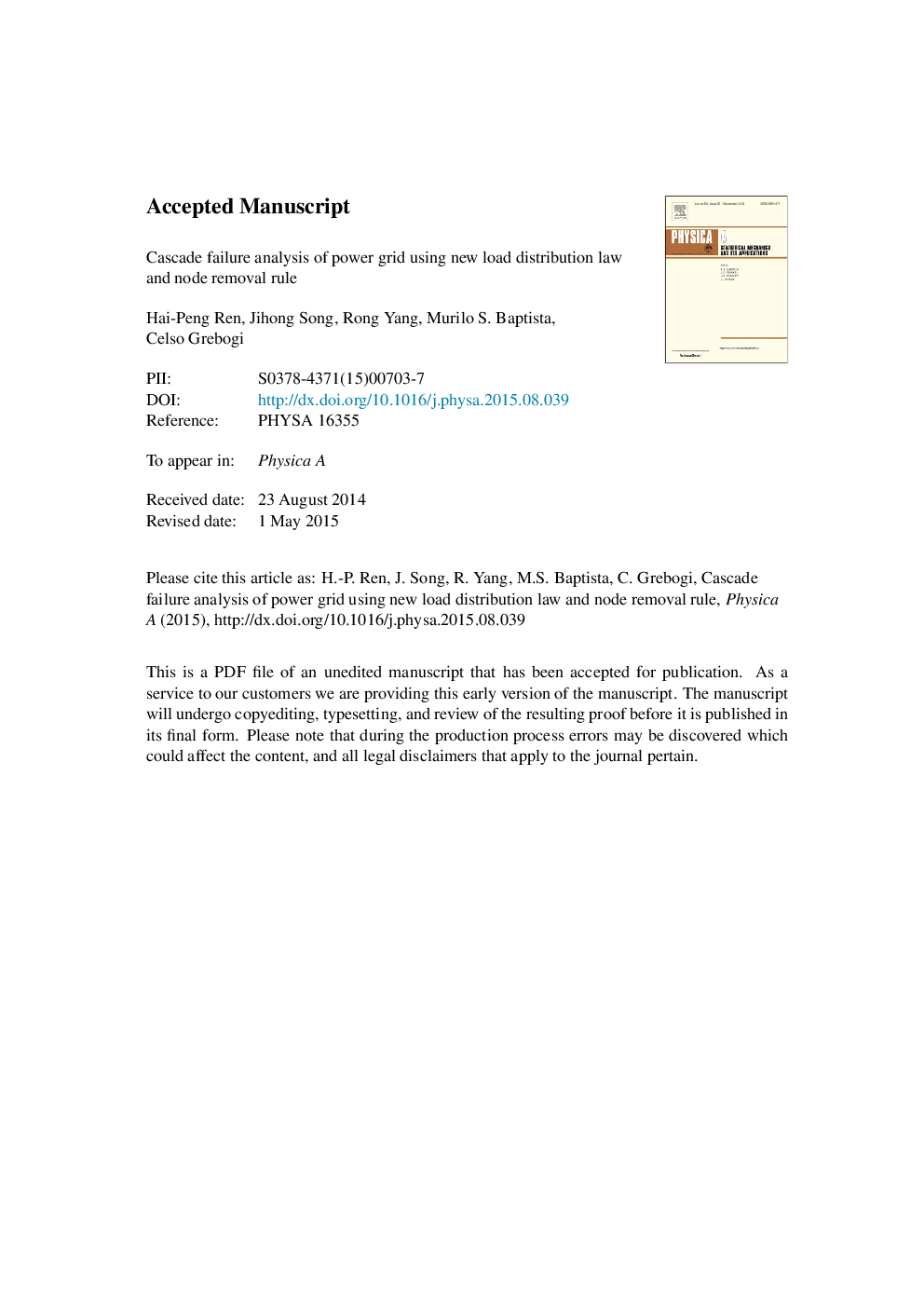| Article ID | Journal | Published Year | Pages | File Type |
|---|---|---|---|---|
| 7379039 | Physica A: Statistical Mechanics and its Applications | 2016 | 13 Pages |
Abstract
The power grid is a directional complex network of generators, substations, and consumers. We propose a new load distribution law to emulate the power grid. We assume that the power flow is transferred through all the paths connecting generators and consumers according to their efficiency. The initial generation of generators and the initial loads of substations are calculated according to the path efficiency and the load of the consumers. If a node fails, it is removed from the power grid, and all paths passing through it will fail to transfer power. In that case, the loads of the corresponding consumers are redistributed within the whole network. During the failure cascading and propagation procedure, our node removal rule is to remove the first overload node along the opposite direction of power flow, then the network distributes load and goes on the cascade procedure. Our new removal rule for nodes does suppress the large scale cascading failures. This work would be very helpful for designing the protective relay system and the tolerant parameters of the grid.
Keywords
Related Topics
Physical Sciences and Engineering
Mathematics
Mathematical Physics
Authors
Hai-Peng Ren, Jihong Song, Rong Yang, Murilo S. Baptista, Celso Grebogi,
